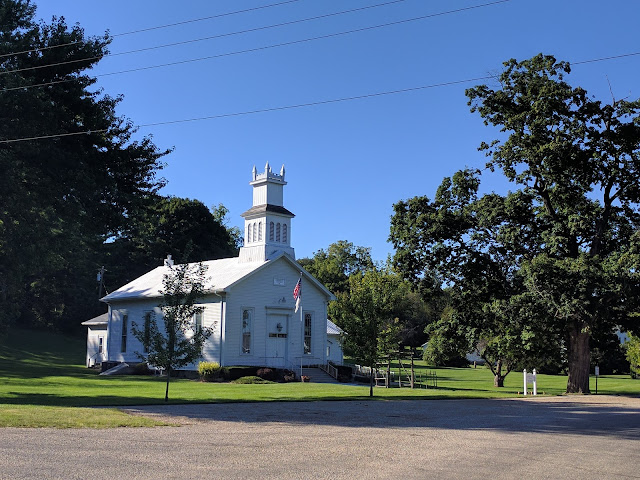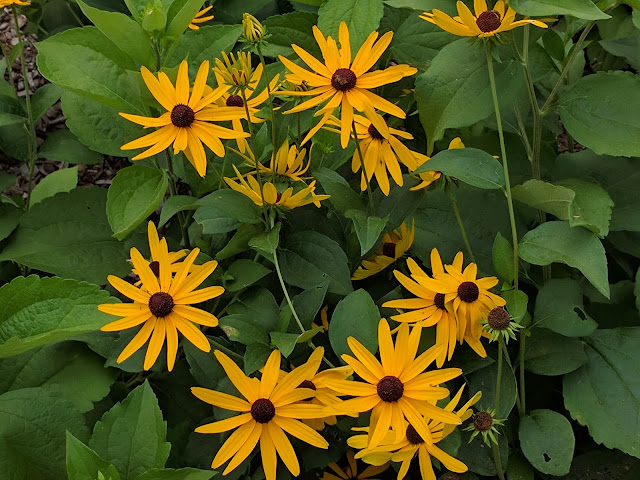I looked forward for a long time to doing star gazing from the farm? Why? Weren't the LA skies clear enough for me? Clear, yes, but also filled with light pollution. Streetlights, car dealerships, hamburger joints ... lots of places have lights that shine up as well as down ... and what goes up also reflects off of layers in the atmosphere and comes back down. We see it as an increase in the sky's background brightness. Based on sites that track the sky's background brightness, the LA location we lived in ranks right up there with the worst in the US. The skies over the farm are two brightness levels dimmer, meaning that dimmer stars would stand out better against the darker background.
Here you can see how I setup my telescope one early summer evening and have a little table next to it with the case I have my eyepieces in. I was setup back between the barn and corn crib, looking north.
Two nights ago the weather forecast said the skies would be clear and I wanted to take some photos looking more south than north. So I setup my 'scope between the old garage and the sheep barn (where we have chickens and ducks, but no sheep. But names stick somehow and that's where we used to have the sheep.) While waiting for the sky to get darker, I tried to help Anne and Kenji get the ducks to go in to the sheep barn for the night - but as Anne says, the ducks were acting like teenagers and not about to do anything we wanted them to.
I decided to use my Canon SL1 to take astrophotos Thursday night. Instead of an eyepiece I put a special adapter on the camera and then put it into the telescope where the eyepiece would normally be. I usually start out by focusing on the bright star
Vega, which is in this first star photo.
Other things that I enjoyed were the
Hercules Globular Cluster
which is what appears to be a smattering of stars just left and below of center. That smattering consists of some 300,000 stars!
The
Ring Nebula affords another fascinating view. This kind of nebula forms when a star throws off some of its outer layers - like a snake shirking off its skin as part of the maturing process.
Just left and below center you can see the faint blue ring. The original star is still in the center of the ring (though you can't see it in my photo) and it is the power source that illumines the nebula and causes it to fluoresce.
It's hard to see details in the small pictures above. But if you want, you should be able to click on each of the images to see a larger image.
Early in the summer I would have to wait until 9:15 or 9:30 before it was dark enough to really see the stars well. Now by 8pm I can get out and start viewing - if the sky is clear.















































